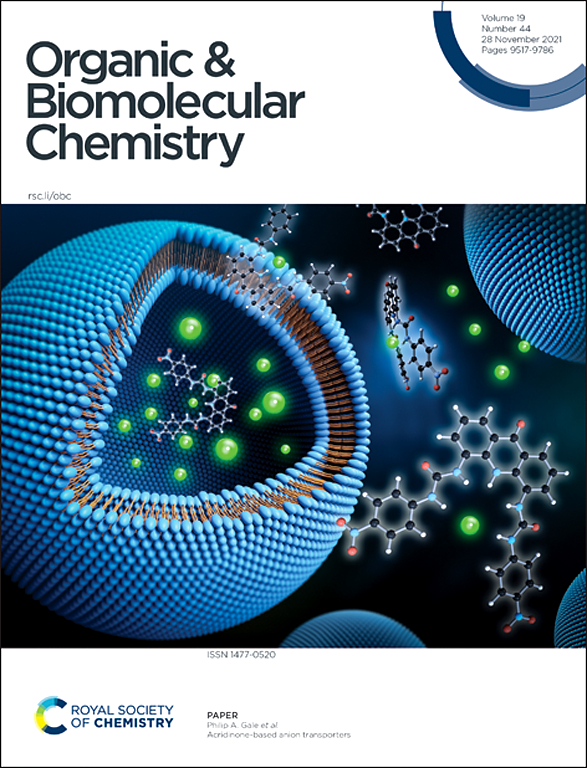铜(II)催化下芳基乙酸衍生物的位点选择性C(sp3)-H胺化反应。
IF 2.7
3区 化学
Q1 CHEMISTRY, ORGANIC
引用次数: 0
摘要
以游离环/无环仲胺和8-氨基咪唑[1,2- A吡啶](8-AIP)为双齿螯合助剂,成功地建立了铜(II)催化(Het)芳基乙酰胺衍生物的交叉脱氢(CDC)工艺。该方法在空气存在下具有良好的官能团相容性,具有广泛的衬底范围。此外,通过合成衍生物的后多样化展示了该新协议的合成适应性。本文章由计算机程序翻译,如有差异,请以英文原文为准。
Site-selective C(sp3)-H amination of (het)aryl acetic acid derivatives under copper(II) catalysis.
A ubiquitous copper(II) catalyzed cross-dehydrogenative (CDC) process of (Het)arylacetamide derivatives employing free cyclic/acyclic secondary amines with the aid of 8-aminoimidazo[1,2-a pyridine] (8-AIP) as a bidentate chelating auxiliary has been successfully developed. This methodology exhibits a broad substrate scope with good functional group compatibility in the presence of air. Furthermore, the synthetic adaptability of this novel protocol is showcased through the post-diversification of synthesized derivatives.
求助全文
通过发布文献求助,成功后即可免费获取论文全文。
去求助
来源期刊

Organic & Biomolecular Chemistry
化学-有机化学
CiteScore
5.50
自引率
9.40%
发文量
1056
审稿时长
1.3 months
期刊介绍:
Organic & Biomolecular Chemistry is an international journal using integrated research in chemistry-organic chemistry. Founded in 2003 by the Royal Society of Chemistry, the journal is published in Semimonthly issues and has been indexed by SCIE, a leading international database. The journal focuses on the key research and cutting-edge progress in the field of chemistry-organic chemistry, publishes and reports the research results in this field in a timely manner, and is committed to becoming a window and platform for rapid academic exchanges among peers in this field. The journal's impact factor in 2023 is 2.9, and its CiteScore is 5.5.
 求助内容:
求助内容: 应助结果提醒方式:
应助结果提醒方式:


